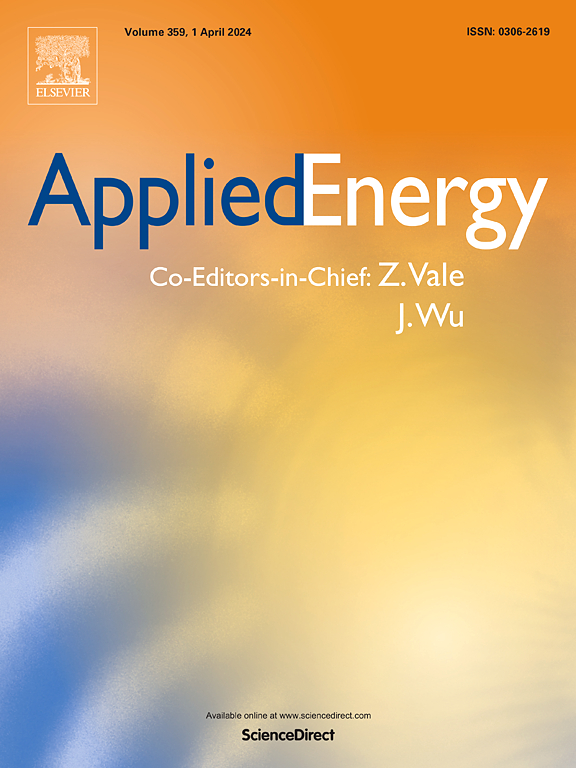Optimal charging scheduling of an electric bus fleet with photovoltaic-storage-charging stations
IF 10.1
1区 工程技术
Q1 ENERGY & FUELS
引用次数: 0
Abstract
Replacing conventional diesel buses with widely acclaimed electric buses (EBs) for urban transit services can significantly reduce the operational costs and carbon emissions. However, if a bus fleet relies solely on the electricity grid as its energy supply, existing economic and environmental problems may not be fully overcome due to the grid’s overdependence on non-renewable energy sources such as fossil fuels. This study models and optimizes an emerging bus charging scenario where photovoltaic-storage-charging (PSC) stations and an electricity grid jointly supply electricity to an EB fleet. Each PSC station is equipped with photovoltaic (PV) panels to absorb solar power and a battery set to store electricity, which can either charge buses, supply electricity to the grid, or do both simultaneously when needed. Unlike previous studies, this research not only addresses when, where, and how much electricity each EB in the fleet should be charged but also determines the optimal internal allocation scheme of electricity within each PSC station that minimizes the total charging cost of the EB fleet in its daily operations. It introduces a mixed integer programming problem with time discretization across a time-expanded network. The charging cost of the fleet is calculated in terms of the sum of PV generation cost and time-of-use (TOU) electricity tariff minus the revenue of supplying electricity to the grid. To solve this problem, a Lagrangian relaxation procedure is designed, in which a dynamic programming algorithm implemented as a bi-criterion labeling procedure is developed for the decomposed single-bus charging scheduling subproblem. We collected relevant weather and operational data of an EB fleet operating in Jiading, Shanghai, to validate the model and algorithm and to gain managerial insights. A sensitivity analysis was conducted to examine how key model parameters such as charging demand and supply, PSC battery capacity, and electricity discharging price influence the charging schedule of the EB fleet. Finally, we compared our algorithm’s performance with a state-of-the-practice commercial solver, demonstrating that our algorithm achieves comparable solution optimality while significantly saving computing time.
求助全文
约1分钟内获得全文
求助全文
来源期刊

Applied Energy
工程技术-工程:化工
CiteScore
21.20
自引率
10.70%
发文量
1830
审稿时长
41 days
期刊介绍:
Applied Energy serves as a platform for sharing innovations, research, development, and demonstrations in energy conversion, conservation, and sustainable energy systems. The journal covers topics such as optimal energy resource use, environmental pollutant mitigation, and energy process analysis. It welcomes original papers, review articles, technical notes, and letters to the editor. Authors are encouraged to submit manuscripts that bridge the gap between research, development, and implementation. The journal addresses a wide spectrum of topics, including fossil and renewable energy technologies, energy economics, and environmental impacts. Applied Energy also explores modeling and forecasting, conservation strategies, and the social and economic implications of energy policies, including climate change mitigation. It is complemented by the open-access journal Advances in Applied Energy.
 求助内容:
求助内容: 应助结果提醒方式:
应助结果提醒方式:


